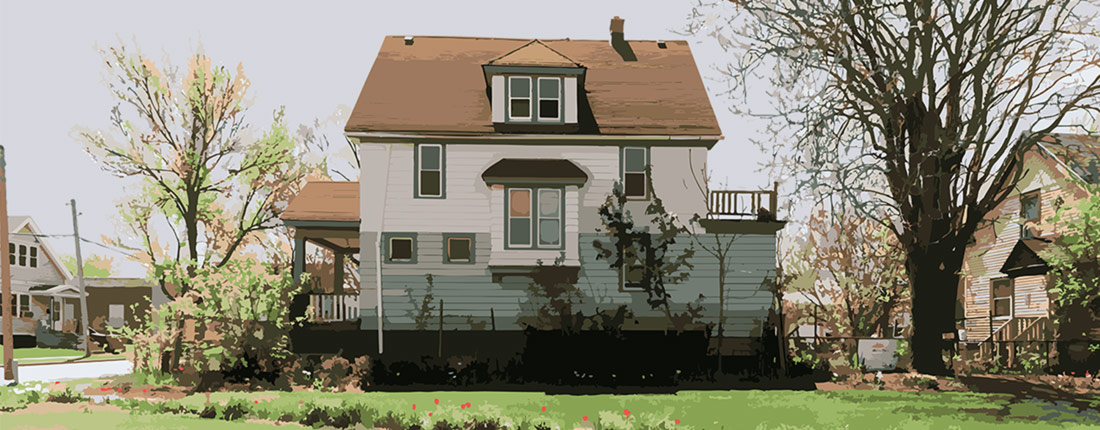Topic(s): Community Revitalization
Lessons from 2023 VAD Academy: Systemic Racism is a Root Cause of Vacant Properties
July 20, 2023

Every year, the Center for Community Progress hosts VAD Academy, our virtual boot camp for public, private, nonprofit, and community leaders whose communities are impacted by vacant, abandoned, and deteriorated (VAD) properties. Over the course of two days, participants of the 2023 VAD Academy learned everything from the basics of what causes vacancy and abandonment and the foundations of community revitalization to advanced legal, policy, and practice tools that can help neighborhoods turn vacant spaces into vibrant places.
There was one key through line from this year’s VAD Academy presentations: systemic racism is a root cause of vacant, abandoned, deteriorated properties. Uncovering and disrupting the unjust systems that perpetuate entrenched vacancy and property deterioration is essential to racial equity.
Widespread vacant properties result from the combined actions of people, policies, and processes, and are not simply a reflection of a weak real estate market. Inequitable, inefficient, and ineffective laws and practices feed a cycle of poverty and disinvestment that results in property abandonment and make it harder to put properties back to equitable reuse.
Tools like code enforcement systems and land banking that can help neighborhoods thrive must be implemented with racial equity in mind, or else they can just as easily perpetuate a broken status quo. Here are two examples from this year’s VAD Academy:
Racial Inequity in Property Tax Systems
The property tax system—which encompasses all parts of property tax administration, from valuation to enforcement—remains unjust and exploitive, especially for people of color.
Properties in majority-Black and Latino neighborhoods are consistently undervalued in appraisals, which determine a fair price for the home in price and financing. Appraisals are more likely to fall below contract price in Black and Latino census tracts, and that appraisal gap size grows with the percentage of Black or Latino people in the tract. One study estimates median appraisal is 15 percent lower in majority-Black neighborhoods.
At the same time, Black-owned homes are more often overvalued in property tax assessments, which calculate the amount of property taxes owed. Tax assessments regularly overvalue homes in neighborhoods of color and underassess homes predominately white, wealthier neighborhoods. From 2010-2019, Franklin County, Ohio overvalued homes in predominantly Black, low-income neighborhoods by as much as 50 percent. Some cities, like Detroit, are working to correct the overvaluation with equity in mind. A major residential reassessment effort from 2014-2017 resulted in assessment reductions for over two-thirds of properties, and this year the City Council authorized funding and programs for homeowners impacted by overassessment.
Appraisals and assessments are just the tip of the iceberg for injustice in the property tax system. Community Progress advocates for system-wide reform so that the delinquent property tax enforcement process does not harm residents and effectively addresses properties that cause the greatest harm to a community.
Racial Inequity in City Planning and Zoning
For decades, discriminatory land use practices have shaped cities across the United States. Residential segregation ordinances—which sought to institutionalize segregation by preventing Black people from occupying residences on majority-white blocks—were implemented in cities nationwide during the 1910s. Although the Supreme Court ruled race-based zoning ordinations unconstitutional in Buchanan v. Warley (1917), this practice was replaced by racial covenants (also called deed restrictions), which prevented an individual property from being sold or rented to non-white individuals.
The legalization of zoning in Euclid v. Ambler Realty (1926) further armed municipalities to displace Black residents under the guise of public health, safety, and welfare. And redlining, which was used to deny mortgages to residents of “hazardous” neighborhoods, locked Black communities out of private investment and redirected public investment elsewhere.
This discrimination and disinvestment inhibited Black families from building wealth and contributed to the abandonment of large sections of older, industrial cities. Formerly redlined census tracts often have a higher percentage of low-income and impoverished residents, and a higher number and percentage of vacant and abandoned properties. These maps of Louisville offer one stark example.
The impacts of disinvestment and the legacy of vacant, abandoned, and deteriorated properties in historically Black neighborhoods are still present today.
Couldn’t join us at VAD Academy this year? Subscribe to our mailing list so you don’t miss out on other free educational webinars and check out our YouTube channel to see recordings of past webinars on a variety of topics.
Do you represent a community facing vacant property challenges and are interested in taking the next step to addressing it? Community Progress offers customized, expert guidance to help you prevent and reduce entrenched vacancy. Contact us at [email protected] for more information about our services.
Subscribe to join 14,000 community development leaders getting the latest resources from top experts on vacant property revitalization.
